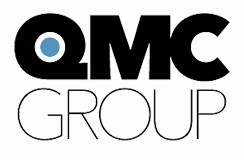Low down and dirty and all alone. That’s how you may feel when a job specifies Reflex Blue. Printers deal with drying, scuffing, scratching, set off, and incompatibility with coatings and UV finishing. Yet Reflex Blue and it’s PMS friends remain popular choices for graphic designers.
Not a Dry Eye in the House
What exactly is in Reflex Blue and why is it problematic? Reflex gets its color from alkali blue pigments. These pigments derive from a porous material called cobalt, causing Reflex’s famous ability to dry slowly. On press, attributes of Reflex Blue or any ink formula that requires large amounts of Reflex are applied heavily to achieve color. The extra ink film puts you in the trouble zone for scuffing and set-off.
What’s the Matter With Hue?

It would make sense to aqueous, UV or varnish coat over Reflex Blue to seal in the job and make it easier for finishing. Two things can happen; some coatings are alkali and will not adhere onto Reflex inks, causing a motley and uneven look. When a dark piece of clothing gets wet it looks darker. Reflex Blue inks will show the same color shift and tend to look bluer. It is important to test color critical work.
Blues You Can Use
In response to the challenges of Reflex Blue, ink manufacturers have invented an imitation. The result is an ink that has a smoother surface that is coatable. Imitation Reflex Blue does not contain heavier cobalt blue pigments. As a result, it is a weaker strength ink. These inks are also priced 30-40% higher. Ink formulas are adjustable; it pays to work with your ink manufacturer to get an ink that will be compatible for mileage and cost.
Why is PMS 289 like sex?
Because you can’t get enough of it. Recently, a customer increased the quantity on a job with heavy coverage of PMS 289. There wasn’t time to manufacture the ink and so I had no alternative but to mix 40 pounds. The job called for aqueous coating and I didn’t stock the imitation Reflex Blue. In the past, I’ve had success coating jobs with regular Reflex Blue. Therefore I combined the mixed 40 pounds with the Reflex. We put it in the press and had to make a significant adjustment. The lesson here is stock both inks. We were able to align the color, but it took some time and effort.
The Digital Divide
Digital printing has its own special problems with Reflex Blue. A digital device can’t just wing open a can of Reflex. They have the true imitation Reflex (a formula of CMYK rendered specifically for their device). Arriving at good numbers for Reflex is easier said than done and digital gurus have their own special sauce. Pantone publishes a Color Bridge guide and there are online converters to try. The bright side is you can get a digital proof to show the client what the color will look like.
I, IV, V

The 1, 4, 5, progression in blues is something we can recognize and rely on. So it is with Reflex Blue in graphics, we know how it’s going to perform. Ink manufacturers and color managers have made it easier to use Reflex without the disadvantages. For more detailed information about Reflex Blue and other problematic colors you should check out The Print Guide. Our job as print producers is to use current information to achieve great results for our clients.

